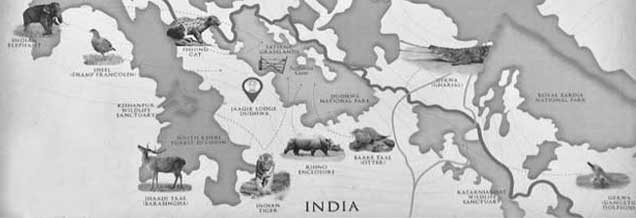
Rajaji National Park is located in the state of Uttarakhand, spread over the districts of Pauri Garhwal, Dehradun and Saharanpur. Sprawled over an area of 820.42 sq km, Rajaji National Park came into being in the year 1983 after merging with the three wildlife sanctuaries, namely Rajaji, Motichur and Chilla. In 2015, the reserve area of 255.63 sq km adjacent to the national park region was enveloped with Rajaji National Park as a buffer area and was established as the Rajaji Tiger Reserve as a whole. The summed-up area of Rajaji Tiger Reserve is 1075 sq km and the declaration took place under the provision of the Wildlife Protection Act 1972. The tiger reserve has emerged as a significant area as it acts as the lungs of three cities - Haridwar, Dehradun and Rishikesh, provisioning an incessant supply of fresh and clean air. The national park or the later tiger reserve was intercepted after the famous freedom fighter C. Rajagopalachari, also popular as Mootharignar Rajaji.
Rajaji National Park is sandwiched between Haridwar and Rishikesh. Haridwar being the nearest has the main safari zones. The Rajaji and Motichur were neighbouring sanctuaries and are separated from the Chilla Sanctuary at the southeast and are dissected by the Ganges and the Chilla River. After Jim Corbett National Park, Rajaji has become the second Tiger reserve of Uttarakhand. The landscape of Rajaji Tiger Reserve comprises of Sal forests, Terai grasslands, riverine and ravines. The forest type of Rajaji is identified as the Indus Ganges Monsoon Forest type that ranges from deciduous to semi-evergreen forest and terai to mixed-broad leaf grassland.
We are the simplest in offering commendable services to form your vacation enriching and affordable. Moreover, we attempt for advancement with the right professionals who have accumulated a few years of experience to sustain goodwill.
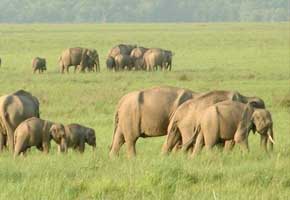
The jungle safari at Rajaji National Park is carried out with jeeps which can accommodate up to 7 tourists and the driver. Guides are not available during the jungle safari. The jeep ride takes the visitors to different zones for the sighting of diverse flora and fauna and lasts for 2-3 hours depending upon the safari zone. Private vehicles are not allowed to enter the forest area premises for safari. Permits are issued by the forest department and are mandatory for entry to the safari zones for both morning and evening slots.
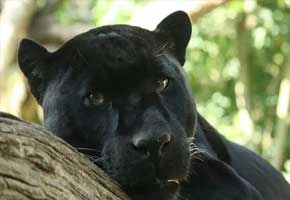
Jhilmil Jheel is a saucer shaped wetland located between the Haridwar-Najibabad NH74 and the natural course of the River Ganga. The total area sprawls 37.83 sq km. The source of water to the wetland is from multiple water channels of the Ganga River. It is bordered by Chiriyapur Range, Shyampur Range and Rajaji Tiger Reserve from all sides. Swamp deer and spotted deer are frequently spotted here. The only village adjacent to the Jhilmil Jheel Conservation Reserve is the Tantpur Village and the villagers strongly support the conservation of the swamp deer of the reserve.
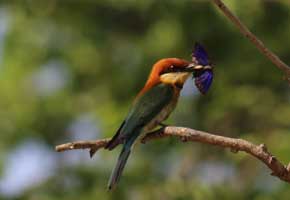
The Chandi Devi Mandir is located atop the Neel Parvat at Haridwar and is about 11 km away from Rajaji National Park. The ropeway ride upwards the temple is a major tourist attraction. The peak point near the temple provides a panoramic view of the Haridwar City and the majestic Ganges. Reaching the temple involves an hour’s trek from the foothill. A visit to the Chandi Devi Temple is also known as Neel Parvat Teerth. Chandika Devi, an incarnation of Goddess Parvati is the presiding deity of the shrine and receives significant footfall of the devotees.
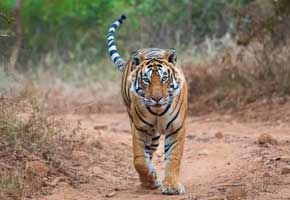
The barrage is located on the River Ganga in the Dehradun district of Uttarakhand, in the southern part of Rishikesh. A stroll on the road of the barrage adjacent to the River Ganga is a serene experience. The primary purpose of the barrage is to channel the water into a canal to provide water supply to the Chilla Power Plant.
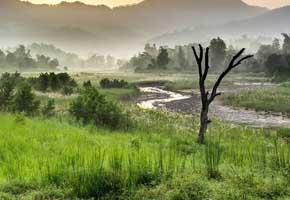
It is an ancient cave, where, according to Hindu mythology, Saint Vashistha practiced meditation. Saint Vashistha was one of the great seven sages, known as Saptarshi. He was also considered to be the human son of Lord Brahma. There is a Shivling placed inside the cave and the cave is managed under the supervision of Swami Purshottamanand Ashram, located near Vashistha Cave. the place is located about 37.5 km away from the Rajaji National Park.
